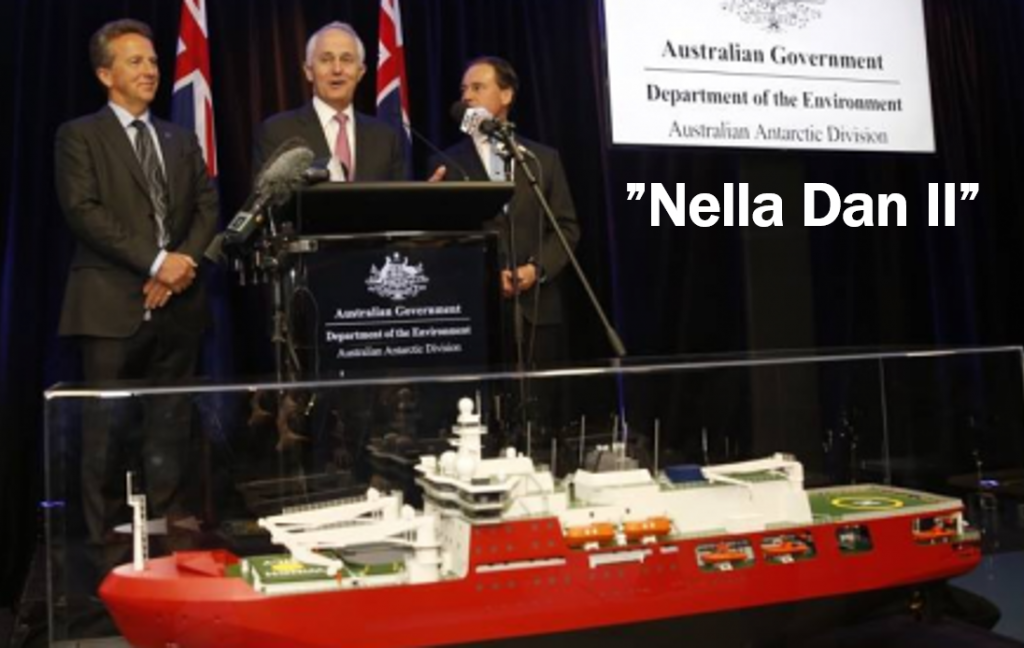Nella Dan II
The Australian government to invest billions in the Antarctic
In October 2015, the Australian government presented the plans for Australia’s new ice-breaker, which is scheduled to operate from 2020 through 2050. The new ship is to replace MV Aurora Australis, which was put into operation in 1989 to replace Nella Dan after the end of the J. Lauritzen era.
The ship was designed by KNUD E. HANSEN in Elsinore, Denmark and is built by Damen in the Netherlands. The steel is cut in Romania, and the ship will be outfitted in the Netherlands.
At Friends of Nella Dan, we are following the construction of the ship with great interest. The association is planning a visit to the shipyard during the construction phase, and our website has a webcam showing the work at the shipyard.

The replacement for MV Aurora Australis
The Danish and the Australian working title for the project was ‘Nella Dan II’. A naming competition has been launched among Australian schoolchildren, so the eventual name probably is not going to be ‘Nella Dan II’. Friends of Nella Dan supports the idea of naming the ship after the founder of modern Australian Antarctic research, Philip Garth Law. Nella Dan was named after Phil Law’s wife, Nel Law.
Finn Wollesen, CEO of KNUD E. HANSEN a/s, Elsinore, explains that the design was a major task that has taken years to complete: ‘We designed and developed the concept in close cooperation with the Australian Antarctic Division (AAD), our owners, Damen in the Netherlands and our partners, DMS, which will be in charge of operating the ship,’ says Finn Wollesen.
To Finn Wollesen, who sailed on Nella Dan from the first voyages in the 1960s with his father and family – and later as an ordinary seaman in the 1980s – it is also an exciting personal experience to follow the new ship up close.
The new ship is faster, has an improved ice-breaking capacity, has a greater cargo carrying capacity and will be able to conduct critical marine research in areas with sea ice for longer periods than MV Aurora Australis.
Although the new 156-metre-long, 23,800-ton vessel will have a greater cargo carrying and marine research capacity, yet is only expected to be able to carry the same number of passengers as the Aurora Australis. The ship will be able to break through 1.65-metre-thick ice, while the Aurora can handle a thickness of 1.23 metre.
(For more information about the new icebreaker. Go to KNUD E HANSEN website)
(For more information about naming the icebreaker in Australia. Go to Classroom Antarctica)
